
WHAT IS STONE PAPER?
With characteristic and technological ingenuity, “Stone Paper” production differs from traditional “Wood Pulp Paper” production methods via the exclusive employment of a blend of mineral powder and small infusion of non-toxic resin.
Stone Paper is truly one-of-a-kind, environmentally friendly paper; beginning with sourcing raw materials to production, end-use and finally degradation or recycling. It functions as paper, performing and often surpassing all requirements for a multitude of conversions and print jobs.
Stone Paper is not a synthetic paper, it is simply a very durable paper made from stone. No other paper can compare to Stone Paper; this ecological paper is an intelligent choice for all applications demanding durable, superior and environmentally-friendly paper. Stone Paper is an excellent alternative for all types of eco-friendly packaging and purely ecological printing needs.
STONE PAPER TYPES:
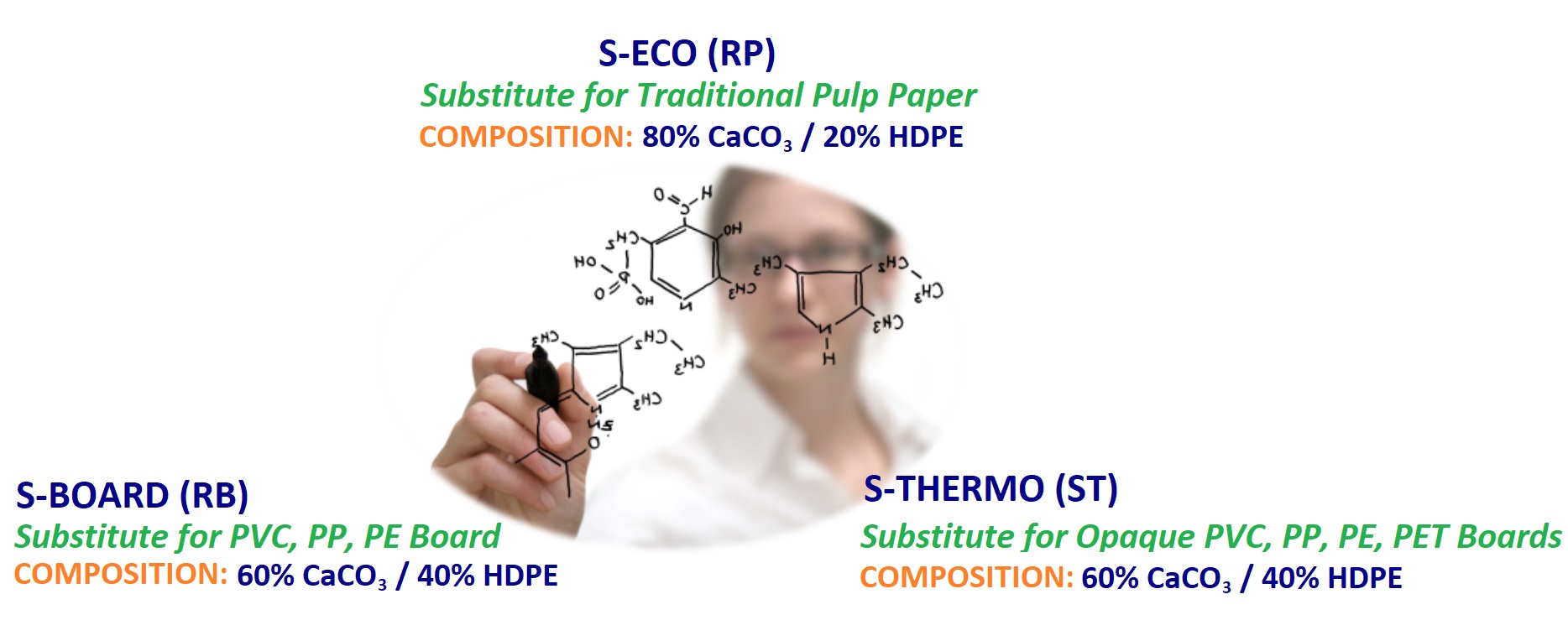
CALCIUM CARBONATE - CaCO3
It is a common substance found in rocks in all parts of the world, and is the main component of shells of marine organisms, snails, coal balls, pearls, and eggshells. Calcium carbonate is the active ingredient in agricultural lime, and is usually the principal cause of hard water. It is commonly used medicinally as a calcium supplement or as an antacid.*
HIGH-DENSITY POLYETHYLENE HDPE
Polyethylene thermoplastic is made from petroleum. Known for its large strength to density ratio, HDPE is commonly used in the production of plastic bottles, corrosion-resistant piping, geomembranes, and plastic lumber. HDPE is commonly recycled, and has the number "2" as its recycling symbol.*
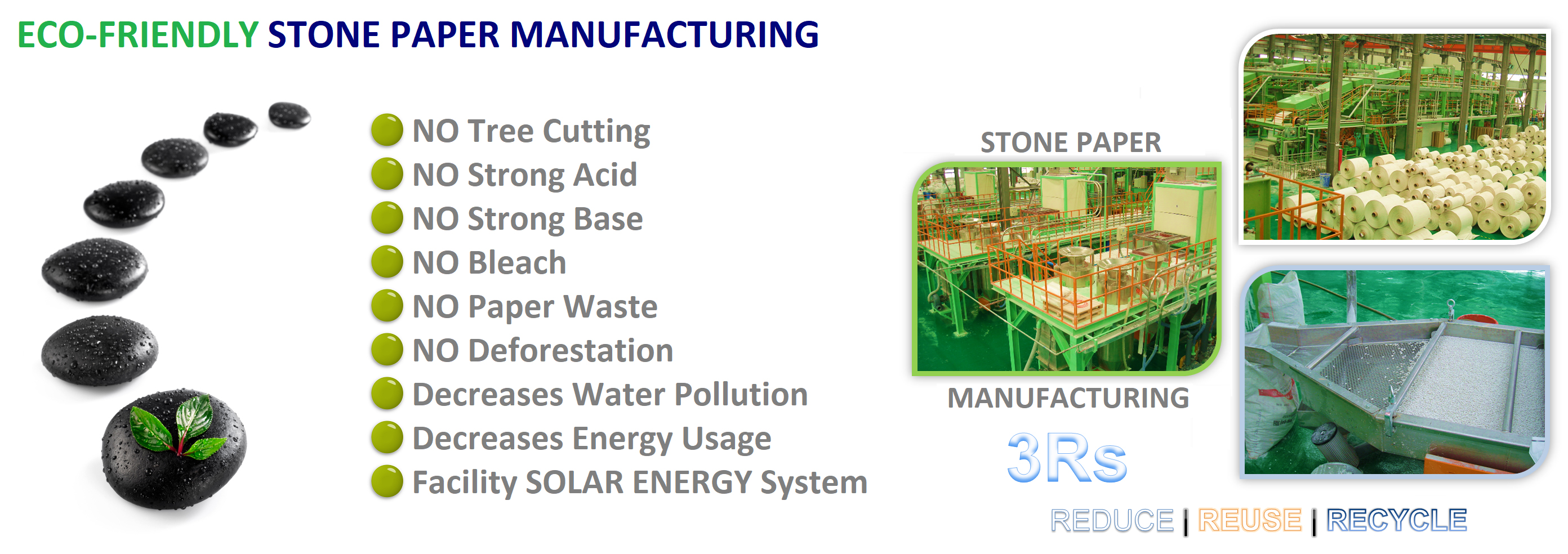
MATERIALS:
Calcium Carbonate: sourced from limestone quarries and is ground down to a fine powder which is 10x finer than a human hair. The Calcium Carbonate is delivered to the Stone Paper factory in powder form for further internal processing.
HDPE: sourced from local major distributors, the HDPE pellets are delivered to the Stone Paper factory for further internal processing.
PROCESS:
Proprietary machinery utilizing patented technology binds the Calcium Carbonate to HDPE in varying consistencies in order to make Stone Pellets which are further processed in the factory to ultimately make Stone Paper. All paper waste at the end of the Stone Paper manufacturing life-cycle is collected and recycled back into Stone Pellets which are again utilized in the Stone Paper manufacturing process.
Unique Stone Paper:
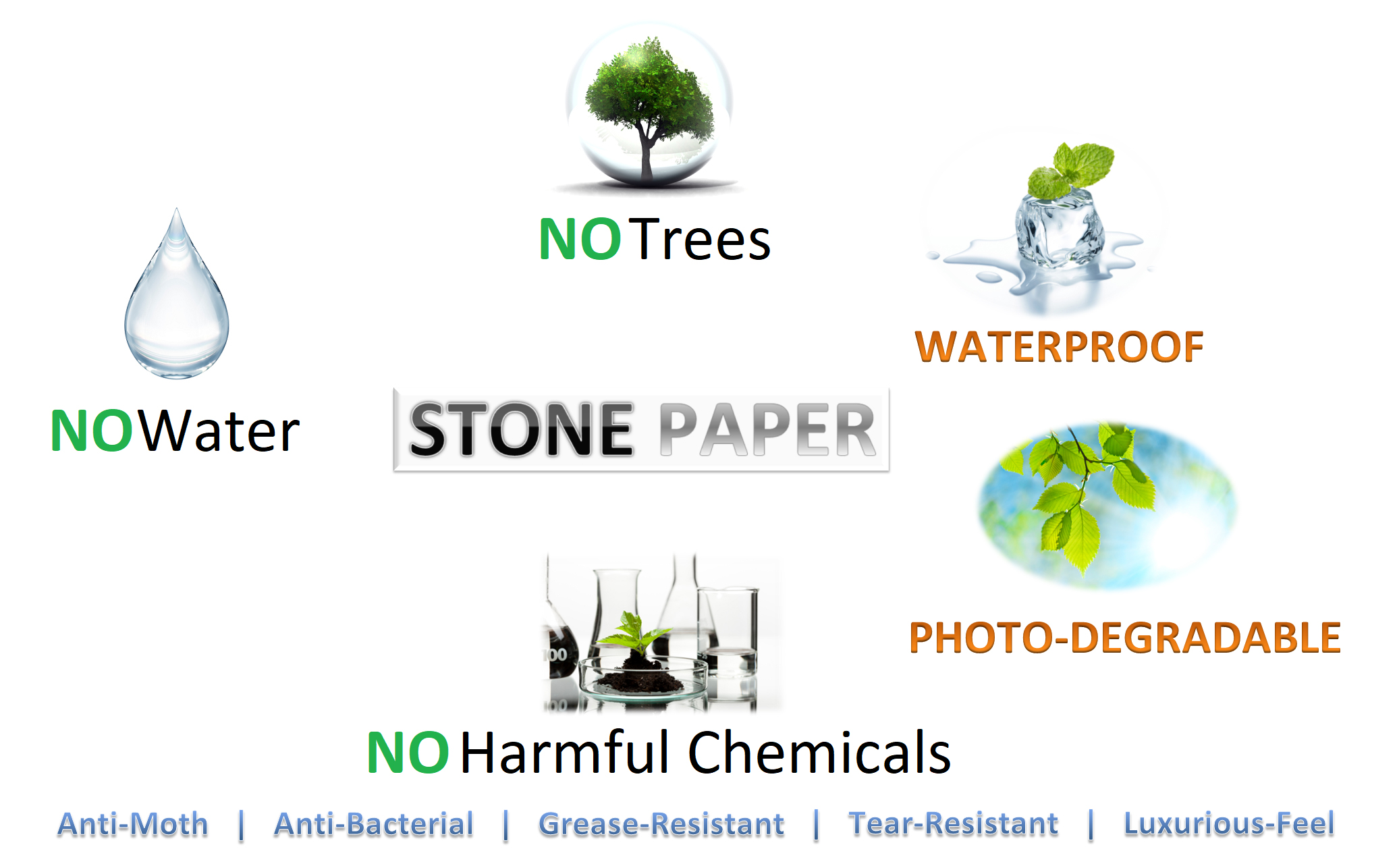
STONE PAPER BY THE NUMBERS:
The following is an illustrated calculation of a Stone Paper user’s contribution to preserve our natural resources by replacing 1 ton of virgin coated paper with 1 ton of Stone Paper
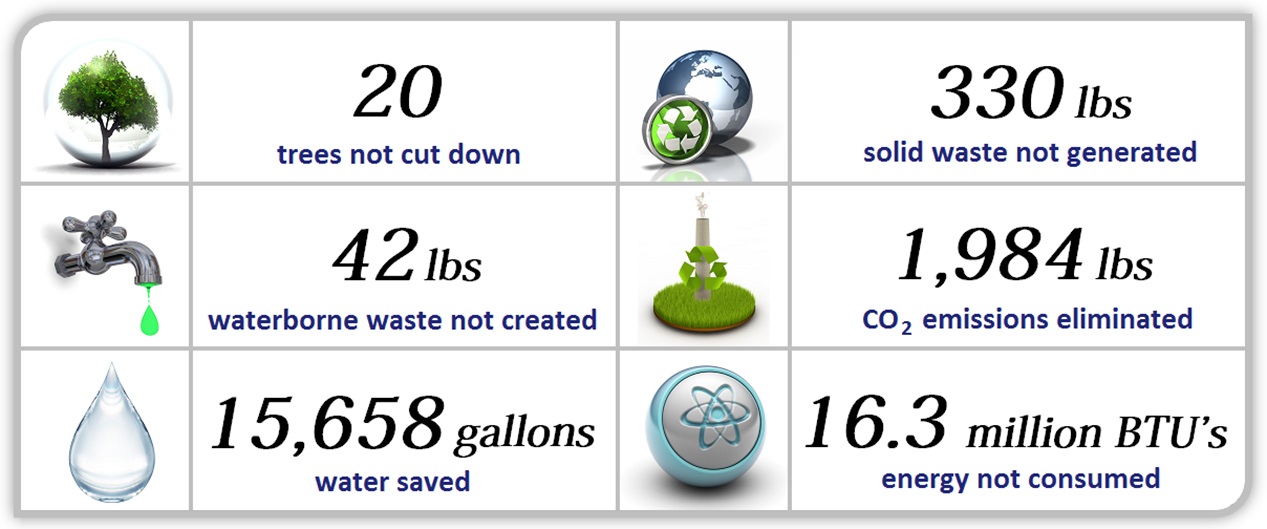
PHOTO-DEGRADABLE:
Stone Paper is photo-degradable, it reverts back to calcium carbonate when left out in sunshine and natural conditions without any harmful effects. As it photo-degrades (around 12 months for RP in direct UV light, and 18months+ for RB) it will look and feel like broken egg shells which continually crack until they again become stone powder (CaCO3).
STONE PAPER PATENTS & TEST REPORTS:

STONE PAPER CERTIFICATIONS:
Stone Paper by C2C Silver
Certified by MBDC
www.mbdc.com
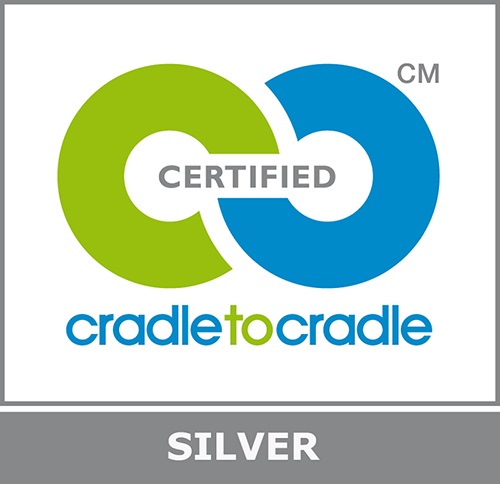
Cradle to Cradle Principles
Material Health: Value materials as nutrients for safe, continuous cycling
Material Reutilization: Maintain continuous flows of biological and technical nutrients
Renewable Energy: Power all operations with 100% renewable energy
Water Stewardship: Regard water as a precious resource
Social Fairness: Celebrate all people and natural systems
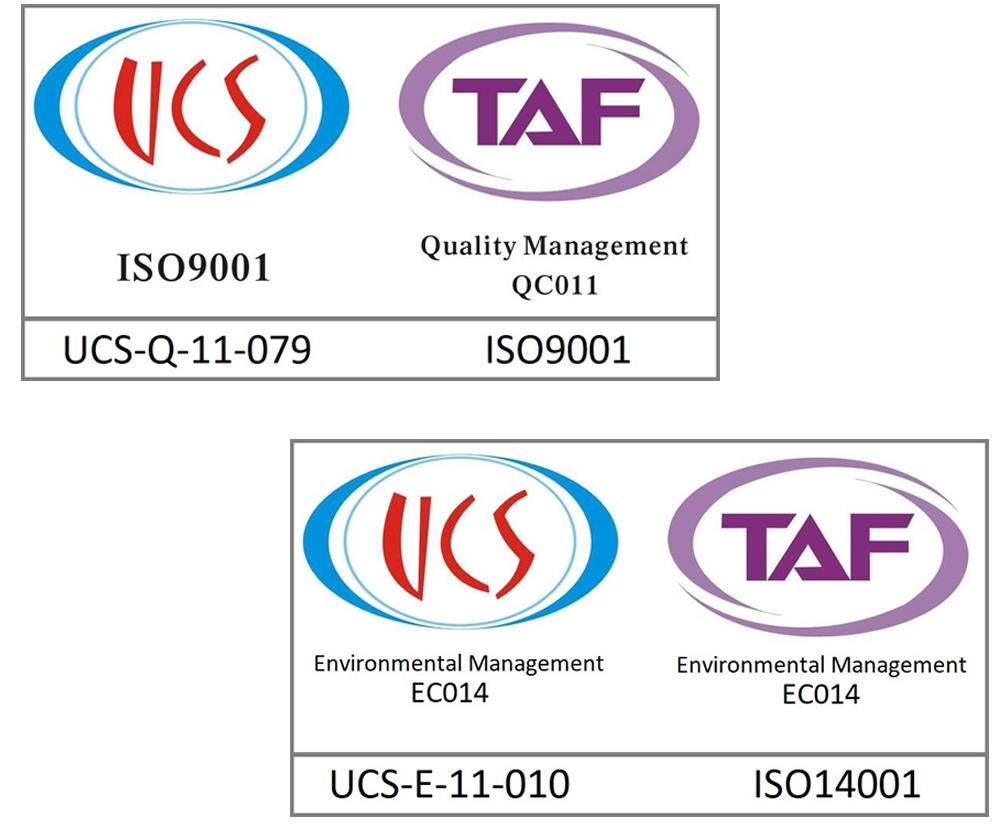
STONE PAPER RECYCLING:
Stone Paper is made from an inorganic mineral powder derived from limestone and calcium carbonate, with a trace amount of non-toxic resin and high-density polyethylene (HDPE) as a binding agent. On average, about 20% of the total ingredients of Stone Paper consist of HDPE. High-density polyethylene has good chemical resistance and is normally utilized for packaging numerous household and industrial chemicals.
The Society of the Plastics Industry (SPI) introduced an identification system in 1998 that labeled packaging primarily for municipal recycling. HDPE – Code 2 – is used in a wide variety of packaging applications including:

